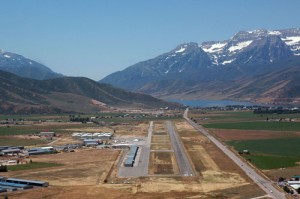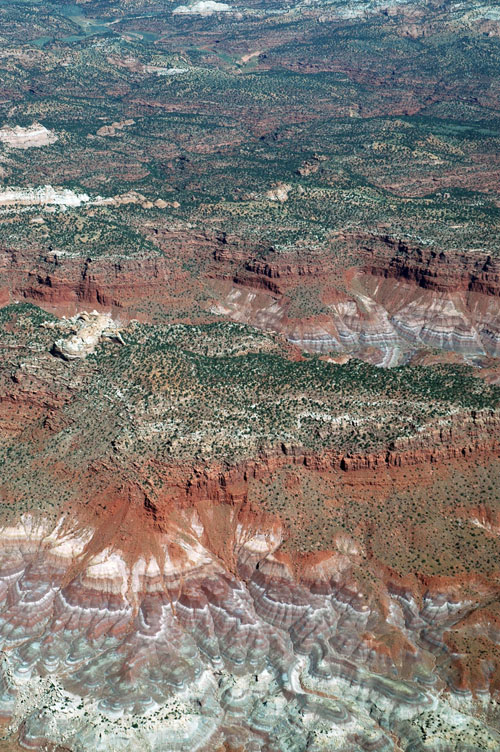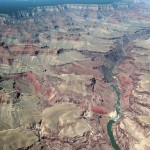
Among the many visual treats on our journey were vermillion rock formations south of Bryce Canyon, Utah.
By Greg Brown
“Do not enter without a ranch hand,” said the sign. “There is nothing on this property worth your life or physical impairment. It’s hell to be crippled or blind.”
“Good thing we have permission to be here,” said my wife, Jean. “Who’d have guessed an air show would lead us to such a place?”
In some respects, the wonders of this trip had begun even before takeoff. Phoenix temperatures hovered around 115 degrees at the time, so when we were invited to help at Utah’s Heber Valley Air Show, cool visions of pine-covered mountains drew our Flying Carpet northward.
Mountain flying can be rough in summertime. To minimize heat and turbulence, we departed early in the morning, well stocked with iced drinks and veggies. To diminish weight and anxiety, we’d invited no passengers. For us, any discomfort on this four-hour journey would be more than offset by the amazing views; starting with the Grand Canyon an hour after takeoff, we gawked downward at a spectrum of geological treasures including Paria Canyon, the Vermillion Cliffs and Bryce Canyon. From there the snow-capped Wasatch Mountain Range led 200 breathtaking miles to our destination.
Heber City Municipal Airport-Russ McDonald Field (36U) nestles in a cozy valley south of Park City. Approaching from the south over 10,000-foot peaks, we couldn’t see the runway until it materialized just a few miles away and thousands of feet below us. Circling down over Deer Creek Reservoir, we joined a swarm of air show arrivals in the landing pattern.
The local volunteers who would lodge us were waiting when we landed. I’ll admit to momentary disappointment when our hosts turned away from trendy Park City toward empty country, but that feeling wouldn’t last. Kay and Toney raise horses with their three teenagers on an idyllic mini-ranch ringed by jade pastures and snow-covered mountains. Over refreshments in the shade of their huge porch, we felt like family members visiting paradise. It’s always interesting to learn the challenges faced by others. Although familiar with water supply issues in our own desert Southwest, Jean and I had personally experienced them only through home conservation efforts. It was an eye-opener learning of our hosts’ 10-year battle to secure water rights for their property.

Air show tents were already going up as we turned final approach to Heber City Municipal Airport-Russ McDonald Field. Beyond the field is Deer Creek Reservoir.
The air show opened next morning like a combustive symphony. Radial engines laid down the rhythm, radio-controlled planes soared soprano and Merlin-powered fighters roared alto; embellishing it all was the percussive crescendo of low-flying jets. Regional fly-ins like Heber Valley are crowded enough to be exciting without distancing visitors from the show planes and their pilots. I sampled the steaming cockpit of a B-25 bomber and savored the aerial antics of a Korean War era P-80 Shooting Star jet fighter and its ruby-red MiG-15 adversary. It was hot here, even at 5,637 feet elevation. Ninety-degree temperatures expressed better than any topo chart the snow-sustaining height of nearby mountains.
After the event, I was helping Toney reset crop irrigation sprinklers when he mentioned antique vehicles owned by his neighbor, Dick. I’d met Dick at the air show and knew he operated a Cessna 206 out of a private airstrip, but had heard nothing of the collection.
“Would you like to see it?” asked Toney.
“You bet!” I replied.
After phoning for permission, we picked up Kay and Jean and began wandering Dick’s property. Sure enough, the remote ranch was peppered with collectible steam and kerosene tractors, antique autos and trucks, and even old buildings moved from other places. Most were complete and restorable. I could have spent hours exploring all the early machines—even Jean was fascinated—but then Dick showed up with a set of keys.
Leading us past a forest of ominous signs, he casually opened the door to a nondescript metal outbuilding. Inside, like buried treasure, was a truly astonishing motorcycle collection. Joining rare marques like King Dick and Excelsior Auto-Cycle were dozens of rare Harleys and Indians, including precious pre-WWI racing machines in concours condition. I’d never seen anything like it outside of a museum.
Next, we visited early storefront buildings complete with circa-1900 electric lighting and original inventory ranging from antique hardware to gasoline-powered washing machines. Just when I thought we’d seen everything, Dick revealed a shed full of beautifully restored cars; between a pair of Packard rumble-seat roadsters and a Ford woody popcorn truck was the robins-egg blue ’38 Lincoln Zephyr convertible used in the movie, “Bugsy.”
Crowning the tour was Dick’s home. An avid hunter, the man had filled literally every room with animal trophies.
“Houseguests are sometimes unsettled by all those staring eyes,” chuckled his wife, Rita. “Especially on late-night visits to the bathroom.”
Given its high elevation and deep-valley location, departing Heber City Airport requires planning. Warm summertime temperatures raised questions about whether our Flying Carpet could safely get off the runway and escape ground effect, and if so, whether it could climb adequately to clear surrounding terrain. Accordingly, we scheduled our departure for the cool of morning, and to minimize takeoff weight, loaded only enough fuel to safely complete the trip, plus reserve. (We’d refuel at Grand Canyon Airport if required.) To clear terrain after takeoff, an experienced local pilot recommended a circling climb to the right until we’d climbed high enough to exit the valley. If unable to climb, we’d proceed over the reservoir and steer down the narrow canyon toward Provo.
Once safely in the air, Jean recalled how warmly Kay and Toney had welcomed us into their family. Images of eye-candy filled my own mind: silvery air show fighters and bombers, cherry-red Indian motorcycles and Dick’s satin-blue “Bugsy” mobile. Noting the cobalt depths of Deer Creek Reservoir far below, I suddenly realized that hours of colorful treasures remained, to enjoy before turquoise ribbons of the Colorado River garnished orange-marmalade rock in a Grand Canyon finale.
For museum information, visit www.hebervalleyaeromuseum.org. Author of numerous books and articles, Greg Brown is a columnist for AOPA Flight Training magazine. Read more of his tales in “Flying Carpet: The Soul of an Airplane,” available through your favorite bookstore, pilot shop, or online catalog, and visit [http://www.gregbrownflyingcarpet.com].
- A turquoise ribbon of the Colorado River garnishes orange-marmalade rock through the Grand Canyon.
- A 1930s pickup truck seems positively modern compared to the early steam tractor beside it.
- You could almost hear the ghosts of long-ago schoolchildren populating this early bus.
















